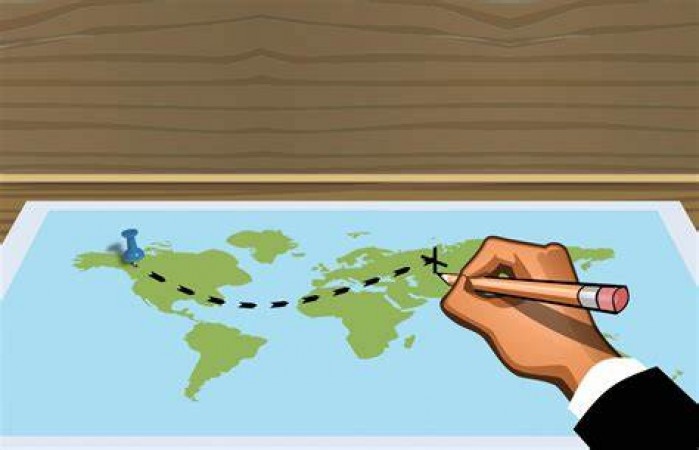
Planning a long-distance move can be an exciting yet challenging endeavor. Whether you're relocating for a new job, starting fresh in a different city, or simply seeking a change of scenery, the process requires careful preparation and organization. In this comprehensive guide, we'll take you through the essential steps of when to begin planning for a long-distance move. From creating a timeline to packing strategies and settling into your new home, we've got you covered.
Assessing Your Move
Evaluate Your Reasons for Moving
Before embarking on the planning process, it's crucial to understand why you're making this long-distance move. Are you chasing a new career opportunity, seeking a change in environment, or moving closer to family? Clearly defining your reasons will help shape your planning approach.
Researching Your New Location
Once you've pinpointed your destination, research is key. Familiarize yourself with the local culture, cost of living, job market, and amenities. This knowledge will guide your decision-making and help you adapt smoothly to your new surroundings.
Budget Considerations
Moving can be expensive, so it's vital to establish a budget early on. Account for expenses such as moving services, packing materials, transportation, and any potential storage costs. Having a clear financial plan will prevent unwelcome surprises down the road.
Creating a Timeline
Setting the Ideal Moving Date
Selecting the right moving date can impact various aspects of your relocation. Consider factors like weather conditions, work commitments, and school schedules. Aim for a date that aligns with your needs and minimizes disruptions.
Establishing Milestones
Break down your move into manageable milestones. Create a timeline outlining when you'll complete tasks like packing specific rooms, notifying utility companies, and finalizing travel arrangements. This approach will help you stay organized and avoid last-minute rushes.
Hiring Professional Movers
Deciding whether to hire professional movers is a crucial choice. Research reputable moving companies, obtain quotes, and book your preferred option well in advance. Professionals can alleviate the stress of the moving process and ensure your belongings arrive safely.
Sorting and Packing
Decluttering Your Belongings
Before packing, decluttering is essential. Sort through your possessions and decide what to keep, donate, or discard. This process not only reduces the items you'll need to move but also gives you a fresh start in your new home.
Organizing Packing Supplies
Gather all the packing materials you'll need, including boxes, bubble wrap, tape, and labels. Having these supplies on hand will streamline the packing process and prevent unnecessary delays.
Packing Strategies for Fragile Items
Protect fragile items by using proper packing techniques. Wrap delicate belongings individually, and use cushioning materials to prevent breakage during transit. Clearly label boxes containing fragile items to ensure careful handling.
Managing Logistics
Notifying Relevant Parties
Inform important parties of your impending move. Notify your current and future employers, schools, healthcare providers, and relevant government agencies. This ensures a seamless transition and prevents disruptions to essential services.
Transferring Utilities and Subscriptions
Arrange for the transfer or cancellation of utilities such as electricity, water, and internet. Similarly, update your subscriptions, magazine deliveries, and online shopping addresses to reflect your new location.
Address Change and Mail Forwarding
Visit your local post office to update your address and set up mail forwarding. This step ensures that you continue to receive mail and packages during the transition period.
The Moving Day
Last-Minute Checklists
As moving day approaches, create comprehensive checklists to ensure nothing is overlooked. Double-check reservations, confirm travel arrangements, and review your packing progress.
Supervising the Loading Process
If you've opted for a DIY move, enlist friends or family to help with loading your belongings onto the moving vehicle. Make sure items are securely packed and properly positioned to prevent damage during transport.
Traveling to Your New Home
Embark on your journey to your new home. Whether you're driving or flying, make travel arrangements that align with your moving timeline. Keep important documents, medications, and essentials within easy reach.
Settling In
Unpacking and Arranging
Upon arrival, prioritize unpacking essentials such as bedding, kitchen items, and toiletries. Take your time arranging your new space to ensure functionality and comfort.
Exploring Your New Neighborhood
Venture out to explore your new neighborhood. Locate nearby grocery stores, medical facilities, recreational spots, and other essential places. Familiarize yourself with your surroundings to feel more at home.
Registering with Local Authorities
Update your official documents, such as driver's licenses and vehicle registrations, to reflect your new address. This step is crucial for integrating into your new community.
Planning for a long-distance move involves careful consideration, organization, and attention to detail. By following this comprehensive guide, you'll be well-prepared to tackle each stage of the moving process, from initial assessment to settling into your new home. Remember, starting early and staying organized are the keys to a successful and stress-free long-distance move.
Tamil Actor Mohan Tragically found dead on the Streets of Madurai
How to Build a Custom PC for Gaming or High-Performance TasksSC Stays Rahul Gandhi's Conviction in 'Modi Surname' Defamation Case